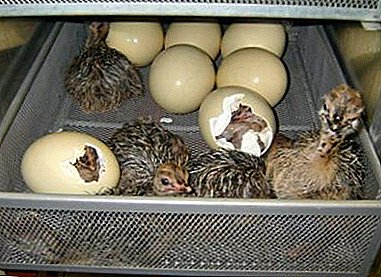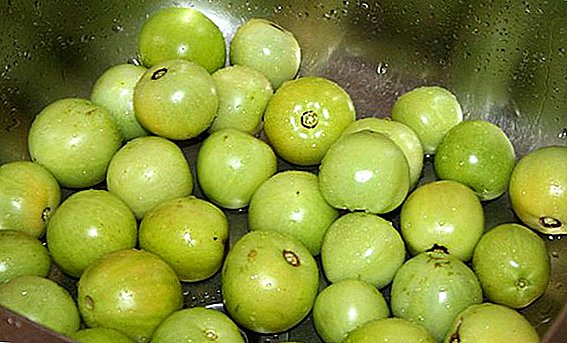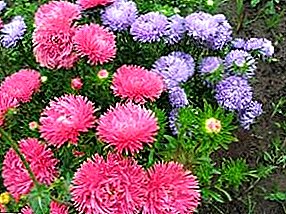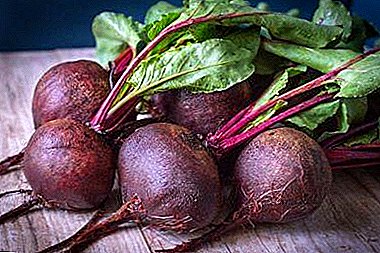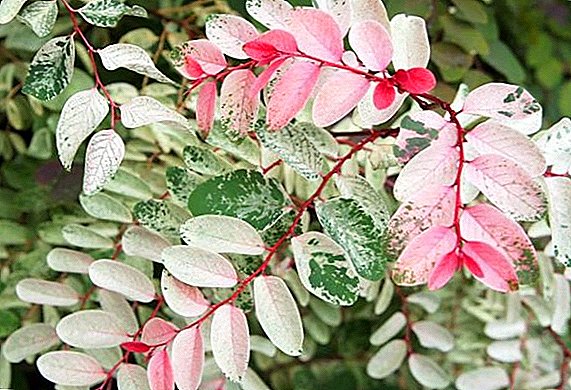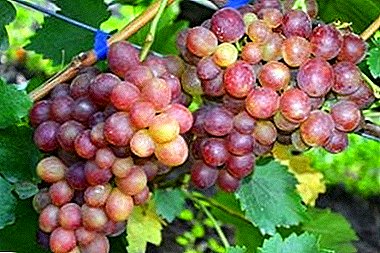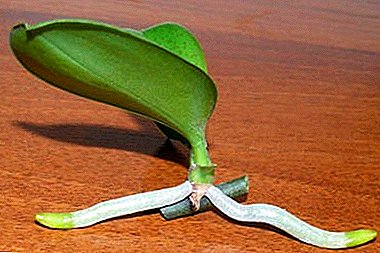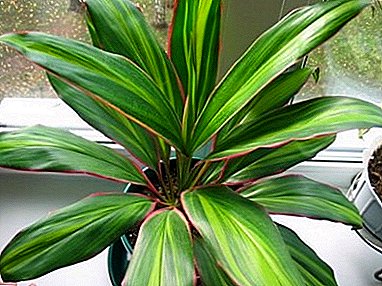
Boletus or hurts have long been used in food. There are edible, conditionally edible and inedible mushrooms. This family of mushrooms is one of the most popular species of edible representatives - the white mushroom. In the article we will talk about how cep looks, how to distinguish between inedible and conditionally edible boletus mushrooms, what types of boleta are.
Krasivonozhkovy
This type of boletus has poisonous compounds in its pulp, therefore experienced mushroom pickers know that it is forbidden to eat it. It tastes bitter and causes intestinal upset, as a result of which acute pains occur in the intestines and liver, appetite disappears and chills appear.

The hat of a beautiful mushroom has a color of unrefined sunflower oil with a slight shade of ripe cherry. The matte structure of the cap may be covered with a slight wrinkling, which resembles a semicircle with wavy edges. With age, the cap takes the form of an unevenly cut ball, which has a waviness at the edges of the cut. Its diameter reaches 15 cm (in rare cases it may be more). A distinctive feature of the beautiful-numb bolt is that it is not eaten by worms and slugs, since they will immediately die from its toxic substances.
Did you know? In the early 60s of the twentieth century, mushroom pickers found a bolt that weighed over 10 kg.
Boletus tubules have a lemon-yellow hue, which with the age of the fungus becomes dark olive. The length of the tube can reach 15 mm, when cut or pressed it turns blue sharply. The pores of the beautiful-bore bolts are small, round, pale pink in color, with age the pores become light yellow, and then turn green. When pressed, the pores acquire a blue tint. Spores in an ellipsoidal fungus, smooth and small (medium size - 14x5 microns).

The leg of a beautiful-shaped barrel-shaped ovule gradually changes color from the beginning of the cap to the base of the fungus. The color begins with a lemon-yellow color, then turns into carmine-red, and ends with a brown one. Old boletus mushrooms may lose their dark red legs. The pulp of the fungus is dense and firm, cream-colored. Initially, it tastes sweet, but then a sharp bitter aftertaste appears. Klyuchonozhkovy bolt common in mountainous coniferous forests, occasionally - in deciduous. Most often occurs in forests from late July to mid-October.
It is worth noting that boletus and boletus mushroom also have a similar appearance.
Rooted
This type of boletus has many different names: deep-seated, bitter spongy, whitish, stocky. The cap of this boletus is hemispherical in shape (in young species), with a diameter of 5-18 cm (occasionally reaches 25-28 cm or more). The skin is dull, the color of lime soil, sometimes acquires a tint of unripe lime. When squeezed, the cap acquires a roughly blue tint.

Tubes have a bright yellow color. The pores are circle-shaped, small, acquire a blue tint with rough contact. The size of the dispute is the same as that of the beautiful-faced mushroom. Spore powder painted in golden color. The leg of young eukaryotes resembles a cylinder, bloated from the inside, 5–10 cm high and 3–6 cm long in the section. With age, the leg takes the form of an ideal cylinder. The color of the legs is bright beige, at the base one can see light turquoise spots. The top of the stem has an uneven grid, which, with rough contact, acquires a tint of heavenly color. The pulp is very similar in structure to the pulp of champignon, but its taste is poor (strong bitterness prevails).
Important! Some bolts can affect the function of the liver and destroy its cells, therefore, at the first symptoms of poisoning, you must immediately contact a medical institution for help.
This mushroom rarely found in European and North American forests. Prefers to grow at the base of oak or birch groves. It can be found in summer and autumn., although it often forms mycorrhiza. The boletus rooted in the description is very similar to Satan's pain, but the latter has an unpleasant smell from under the cap. In some reference books you can see the data that this mushroom is edible. He really does not have in itself poisonous substances that are deadly to the human body, but bitter root has a bitter tastetherefore, nobody uses it in cooking.
Familiarize yourself with the marinating features and the methods of harvesting mushrooms for the winter
Le gal
This type of boletus in its structure has toxic compounds, in addition to the unpleasant bitter taste can cause irreparable harm to the body. Named in honor of a woman who was a mycologist at the beginning of the twentieth century in France. Her name was Marcel le Gal, but in Russian literature this mushroom often referred to as "boletus legit".

The upper base of the leg is frosted, almost smooth, pink, less often orange, color. The shape of the cap of a young boletus resembles the shape of a convex ellipsoid. Over time, the cap becomes less rounded and becomes cushion-shaped. Its diameter depends on the age of the bolt and varies from 7 to 17 cm or more. The flesh of the legger has a lemon-yellow hue and a rich mushroom smell. In places that have eaten slugs, it is painted in the color of ripe olives, typical of almost all mushrooms of the boleto genus.
To protect yourself from severe poisoning, familiarize yourself with how to distinguish the usual agaric from false foxes.
The structure of the legs resembles inflated cylinderwhose average diameter varies from 3 to 5 cm (sometimes sizes reach 6-8 cm). The length of the stem depends on the age of the eukaryote and can reach fifteen centimeters. The pores are painted in a light carmine color, the tubes reach a length of 1.5-2.2 cm. The dimensions of the spores and the color of the spore powder are identical in biological characteristics to the representative described in the paragraph above.

Borovik le Gal most often occurs in Western Europe. Prefers alkaline soil, most often grows under hornbeam or oak. In the woods it can be found in summer or early autumn. Le Hal, in addition to the unpleasant bitter taste, has in itself some poisonous substances, therefore to eat it is strictly prohibited.
Did you know? In Italy, it will be considered a violation of the Law if you yourself (without permission) go to the forest to gather mushrooms.
Beautiful
This type of pain can cause food poisoning, therefore attributed to inedible poisonous mushrooms. The first symptoms of poisoning include: abdominal pain, nausea, diarrhea, vomiting, chills. Symptoms usually disappear without the intervention of the ministers of medicine in 24-36 hours. Fatal cases of poisoning by a beautiful bolt have not yet been registered.

This type of boletus has a rather large cap diameter (there are specimens with a cap diameter up to 30 cm). It is painted in dark red, less often - brown. Unlike all the above types of bolt, this mushroom has a rough surface of the cap. The characteristics of the pulp of this boletus are identical to those described above.
We also advise you to find out how to distinguish the windmills, chanterelles, and mushrooms from inedible mushrooms.
Leg length is standard, but its diameter has a fairly solid indicator (up to 12 cm). The structure of the legs resembles a convex cylinder that tapers at the base, painted in a bright brown color. The length of the tubes reaches 1.7 cm, the color resembles a mixture of lemon and lime. Pores with pressure acquire a blue tint, in a natural form have a bright brown color. Spore characteristics do not differ from other representatives of this genus.

Most often, the boletus is a beautiful mycorrhiza with fir or rockfruit. Most often is found in the northwestern United States. It has also been discovered in the state of New Mexico. You can discover this bolt in mixed forests in late summer - early autumn.
Pink purple
The shape and diameter of the cap are exactly the same as that of the previous representative of the Borovik genus. When wetted, the cap becomes a bit mucous and acquires bumps. This mushroom has an uneven color, which varies from light gray to olive gray. It has zones with a purple-red and brown tint. When pressed on the fungus, dark blue spots are formed. Sometimes a pink-purple bolt can be damaged by insects. Damaged areas have a yellowish or olive lemon hue.
Important! Note for mushroom pickers: anthills are often found in places where large numbers of boletus are growing.
The characteristics of the tubular layer and the pores are the same as in the beautiful bolt, however, the pores have a brighter color (pink-orange or light red). The length of the leg of this bolt reaches 15-17 cm, and its diameter is 7 cm. The color of the leg is lemon-yellow with a slight pinkish-purple shade. At the end it has a light burgundy mesh, with pressure it acquires a blue tint.

The flesh of this representative is dense, has a pleasant fruity smell, olive-yellow color. In place of the cut becomes dark blue, after a while the color becomes a contrasting wine shade. Pink-purple boletus has a sweet flesh and pleasant taste characteristics, however, it is not recommended to use it raw or cooked, as it is a toxic representative of bolets.
Edible mushrooms include: red, mushroom, svinushka, boletus, mushrooms of the syroezhkov family, boletus and honey agaric
There is a pink-purple mushroom on calcareous soils in deciduous forests, more often in mountainous areas. Prefers to grow among beech and oak trees. This disease has been little studied by mycologists, so it is not recommended to collect it. In addition, it is quite rare to meet mushroom pickers. The most widely distributed in Western Ukraine, Russia, and some European countries.
Rosy-skinned
This type of boletus looks almost the same as pink-purple. The cap, unlike the fungus described above, has a slightly velvety skin. Sometimes it is covered with a kind of sticky substance, has a chocolate-gray plaque, the edges are painted in light burgundy color. The leg of the pink-skinned bolt is very similar in structure and color to the leg of the representative described above, the only difference is that it can reach a length of 20-22 cm. The pulp has a less pronounced taste and smell.
Did you know? The first images of mushrooms appeared as early as 1450 years before the birth of Christ. The images were found by archaeologists in the territory of modern Egypt.
The tubules in mature representatives acquire dark shades (greenish, more often - purple-blue). This bol is very similar to the satanic mushroom, which is found in the same places, grows in the same conditions. However, the rosy-skinned representative of this genus is found very rarely by mushroom pickers; therefore, mycologists have not studied it well enough. Experienced mushroom pickers do not collect this type of bolt, as it contains poisonous compounds. Inexperienced people ate pink boletus, which caused unequivocal symptoms of food poisoning in 2-3 hours. There is chills, pain in the stomach and liver, nausea, vomiting, diarrhea, etc. Fatal cases of poisoning with a pink-and-red skin have not yet been registered, however, if you eat too many mushrooms of this type, then convulsions can begin, which can lead to loss of consciousness. Moreover, it is impossible to use a pink-skinned representative even in boiled form (after long hours of heat treatment, toxic substances do not break their structure).

Wolfish
The shape of the wolf bolt cap has a standard structure, which belongs to almost all members of the Borovik genus. Cap diameter can vary from 5 to 20 cm, depending on the age of the fungus. The color of the cap varies, often depending on the age of the representative and on the mineral substances contained in the soil (light red, purple-pink, light pink (young bolts), burgundy). Biological characteristics suggest that young members of the Wolf species have a lighter skin color (often dull coffee, light gray). With age, the fungus acquires strict dark shades of brown or carmine-red color, the skin becomes completely bare (without a felt patina).

A leg of a wolf bolt of a standard shape (a convex cylinder becomes almost perfect with age). The leg length, unlike other members of the genus, is small, reaching only 6-8 cm, diameter - 3-6 cm. The color is the color of yellow grapes with a faintly visible light red spot. The tubular and spore characteristics are standard, but there is a difference in size (the tubes are small, however they increase with age). Like other bolts of this genus, when pressed on it, the fungus acquires the color of ripe blue grapes. The pulp of the fungus does not have a pronounced distinctive smell or taste. Most often, wolfbears are found in deciduous forests in Israel (from November to the end of December). It grows in groups in the specified country is quite common. Refers to moderately edible mushrooms. Eaten after a thorough heat treatment (cook for at least 15 minutes at a temperature of 100 ° C, the broth is not consumed as there are dissolved toxic substances in it).
Important! There are about 300 species of borovik, so before you go after them into the forest, you need to carefully study the literature data so as not to collect inedible representatives of the genus.After reading the article, it will become clear to many what a boletus is, what kinds of them exist, and which of them can be eaten. This is very important information that every mushroom picker should learn so as not to harm their health by eating inedible mushroom mushrooms.


